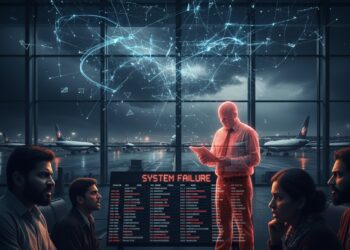V. Srinivas The author is IAS & Chairman, Rajasthan Tax Board
The Reserve Bank of India was established in 1935, as the country’s central bank. The sub-committee of the First Round Table Conference said that efforts should be made to establish on sure foundation and free from any political influence…a Reserve Bank which will be entrusted with the management of the currency and exchange. Sir Osborne Smith was appointed as the first Governor of the Reserve Bank of India.
The appointment was to ensure that the first Governor of the Reserve Bank would be a person on whom the Bank of England could rely and from whom they could expect unquestioning cooperation. Sir Osborne Smith resigned in 1936 citing Government’s attempts to dominate the RBI. The main causes of Sir Osborne Smith’s resignation were, apart from his temperamental incompatibility, the serious differences of opinion which arose between him and the Finance Member over the lowering of the Bank rate and the management of the Bank’s investments.
On August 11, 1943 Sir C.D.Deshmukh ICS was appointed as the first Indian Governor, of the Reserve Bank of India at the young age of 47. He represented India at the Bretton Woods Conference in 1944 for creation of the IMF and World Bank which India joined as an Original member. The Reserve Bank of India was nationalized and brought into public ownership. On July 1, 1949 Sir Benegal Rama Rau was appointed as Governor RBI. In 1951, the RBI increased the interest rates to 3.5 percent from 3 percent at which it had remained since 1935.
On 12th December 1956, Prime Minister Jawaharlal Nehru addressed Governor RBI Sir Benegal Rama Rau on a memorandum circulated by the Governor to the Directors of RBI on the Finance Bill. The Prime Minister said “I have read this memorandum with great surprise. Apart from the contents of this memorandum, the whole approach appears to me to be improper. It is if I may use the words, an agitational approach against the Central Government. …Monetary policies must necessarily depend upon the larger policies which a Government pursues. It is in the ambit of those larger policies that the Reserve Bank can advise. It cannot challenge the main objective and policies of Government.” On January 7, 1957 Sir Benegal Rama Rau resigned from the post of Governor RBI.
In July 1966, the Rupee was devalued by 36.5 percent to bring domestic prices in line with external prices, to enhance the competitiveness of exports. The US dollar which was equivalent to Rs. 4.75 rose to Rs. 7.50 and the pound sterling from Rs. 13.33 to Rs. 21. The Government declared a plan holiday. In July 1969, the Government approved the Nationalization of 14 major Indian Scheduled Commercial Banks under the Banking Companies (Acquisition and Transfer of Undertakings) Ordinance 1969. This was followed by a major push to enhance Rural Credit came when the Regional Rural Banks Bill was passed in January 1976. The RRB’s were envisaged as state-sponsored, regional based, rural oriented commercial banks.
The Balance of Payments situation changed dramatically in 1979-80. Inflation soared from 3 percent to 22 percent and the external terms of trade worsened significantly. India sought a loan for SDR 5 billion from the IMF. The Fund program envisaged a reduction of the current account deficit by 2 percent of GDP and the ceiling on external commercial borrowing. Through the program period (November 1981 to February 1983) the RBI followed a policy of gradual devaluation of the rupee against a basket of currencies. India met all the performance criteria agreed upon and made each drawing on time.
After three years, India had drawn SDR 3.9 billion of the SDR 5 billion, leaving SDR 1.1 billion to be drawn. India was again on the verge of an economic crisis by 1990. On August 27, 1991, the Finance Minister addressed the Managing Director IMF for an 18-month stand-by arrangement in an amount equivalent to SDR 1656 million. A memorandum of economic policies setting out the economic program of the Government of India for the period 1991/92 and 1992/93 was also submitted. The Government indicated its willingness to enter into a comprehensive structural adjustment program, supported by an arrangement under the Extended Fund Facility.
In November 1997 the RBI was confronted with the challenge of handling the Asian Currency Crisis. The RBI introduced a series of measures aimed at absorbing excess liquidity without affecting availability of credit in productive sectors. By 2001, the RBI became a regulator of the money market. The automatic monetization of budget deficits was phased out with Government borrowing from the market. The rupee was made fully convertible on the current account. In the period 2000-2008, the RBI successfully handled banking supervision. The RBI adopted a modern payments and settlements system for oversight of the financial sector. Severe penal actions were taken against errant banks.
The RBI insisted on merger of banks with weak balance sheets with stronger banks to ensure that there were no private sector banks which did not meet the RBI’s capital adequacy requirements. Since 1935, the RBI has been at the forefront of public policy and economic thought. It represents one of Indian democracy’s strongest Institutions.

















